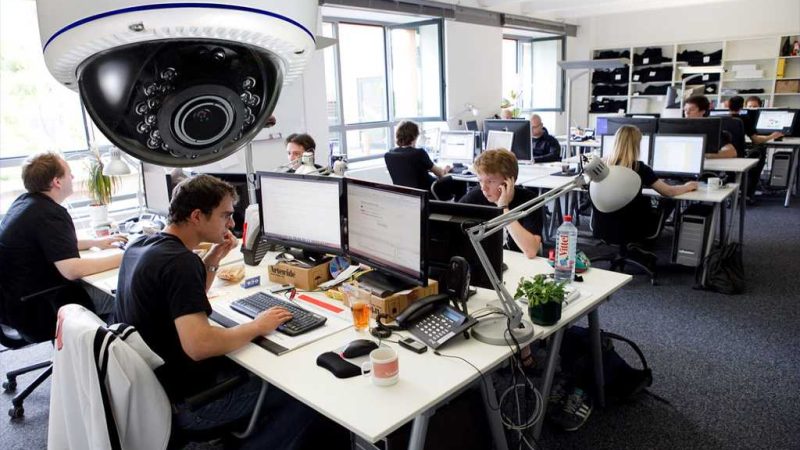In 2025, workplace security goes far beyond locked doors and CCTV cameras. With rising concerns about cyber threats, data breaches, and physical safety, creating a truly secure office requires a proactive, multi-layered approach.
Whether you’re managing a small startup or a multi-floor corporate office, investing in security is essential for protecting:
- Employees and visitors
- Confidential business data
- IT infrastructure and hardware
- Physical assets and equipment
This guide outlines how to build a secure office—covering both physical and digital security measures—to ensure your business is protected from modern threats.
What Is a Secure Office?
A secure office is a workspace designed to prevent unauthorized access, ensure employee safety, and safeguard sensitive data and assets. This includes both physical security protocols (e.g., access control, surveillance) and digital security measures (e.g., firewalls, encryption).
A secure office = safe people + protected data + reliable systems.
Key Components of a Secure Office
Access Control Systems
Control who enters your workspace and when.
- Key card entry or biometric systems
- Visitor management systems
- Time-based access control for employees
- Remote lock/unlock capabilities
Best for: Preventing unauthorized entry and tracking movement within office zones.
Surveillance Cameras and Monitoring
Install CCTV cameras at all entry points, high-traffic areas, and sensitive zones.
- Live monitoring or cloud-based systems
- Motion detection alerts
- 24/7 recording for audits or investigations
- Compliance with privacy laws (e.g., signage for surveillance)
Tip: Store footage securely, preferably off-site or on encrypted servers.
Cybersecurity Infrastructure
Secure your digital assets with strong cybersecurity practices.
- Firewalls and endpoint protection
- Encrypted Wi-Fi and VPN access
- Two-factor authentication (2FA) for systems
- Regular software updates and patching
- Network segmentation to isolate sensitive systems
Cybersecurity is just as important as locking the front door.
Data Protection & Backup Systems
Prevent data loss from breaches, disasters, or human error.
- Automated cloud backups
- Redundant storage systems (RAID, off-site)
- Data encryption at rest and in transit
- Clear data retention and deletion policies
Educate employees on data handling procedures and compliance (e.g., GDPR, HIPAA).
Emergency Preparedness & Safety Protocols
Ensure your office is ready for natural disasters, intrusions, or emergencies.
- Fire extinguishers and first aid kits
- Emergency exits and evacuation maps
- Active shooter or lockdown plans
- Panic buttons or duress alarms
Conduct regular safety drills and refresh emergency contact lists.
Employee Security Training
Even the best systems can fail if employees aren’t trained.
- Phishing awareness programs
- Password hygiene workshops
- Clean desk policies
- Reporting protocols for lost devices or suspicious activity
A secure office culture starts with informed and alert employees.
Physical Office Security Tips for 2025
- Install smart locks on doors and cabinets
- Use visitor badges and sign-in kiosks
- Implement workspace zoning (restrict access to sensitive departments)
- Use security film on windows for added protection
- Hire trained security personnel for large offices
Digital Office Security Tips
- Use Zero Trust network architecture
- Install mobile device management (MDM) software
- Set automatic session timeouts on shared computers
- Enable role-based access to files and databases
- Monitor employee activity with SIEM tools (Security Information and Event Management)
Secure Office Design Considerations
Incorporating security into your office layout improves safety and workflow.
| Feature | Benefit |
| Reception checkpoints | Control initial access |
| Secure server rooms | Isolate critical hardware |
| Soundproof meeting rooms | Ensure confidential discussions |
| Controlled lighting & exits | Reduce risk during emergencies |
| Lockable storage & cabinets | Prevent theft of equipment or data |
Tools & Technologies for a Secure Office
| Category | Recommended Tools |
| Access Control | Kisi, Openpath, HID Global |
| Surveillance | Arlo for Business, Verkada, Eagle Eye |
| Cybersecurity | CrowdStrike, Bitdefender, Fortinet |
| Data Backup | Acronis, Backblaze, AWS Backup |
| Visitor Management | Envoy, Proxyclick, iLobby |
Integrate these tools with existing infrastructure to streamline management.
Cost of Securing an Office
| Security Measure | Estimated Cost (2025) |
| Basic Surveillance Setup | $500–$2,500 |
| Access Control System | $1,000–$5,000+ |
| Cybersecurity Software (annual) | $500–$3,000+ per organization |
| Security Training (per employee) | $50–$200 |
| Backup and Recovery Systems | $20–$200/month (cloud-based) |
View security as an investment—not an expense. A single breach can cost much more than prevention.
Conclusion
Creating a secure office in 2025 means combining physical security with digital resilience. As threats evolve, your approach to office protection must too. Whether it’s preventing unauthorized access, safeguarding sensitive data, or preparing for emergencies, a proactive security strategy helps protect your people, your brand, and your bottom line.
Peace of mind starts with a secure workspace—make it a priority, not an afterthought.
FAQs
1. What is the most important aspect of office security?
A combination of physical access control and strong cybersecurity practices is key.
2. How do I start making my office more secure?
Begin with a risk assessment to identify vulnerabilities, then implement access controls, surveillance, and employee training.
3. Is cybersecurity part of securing an office?
Absolutely. Digital security is just as critical as physical protection in modern workplaces.
4. How often should I review my office security measures?
At least once per year, or anytime you expand, relocate, or experience a security incident.
5. Can a small business afford to secure its office?
Yes! Many cost-effective tools and subscription-based services exist for small business budgets.
Also read: Behind the Scenes Jobs: Top Hidden Careers That Make the Magic Happen









